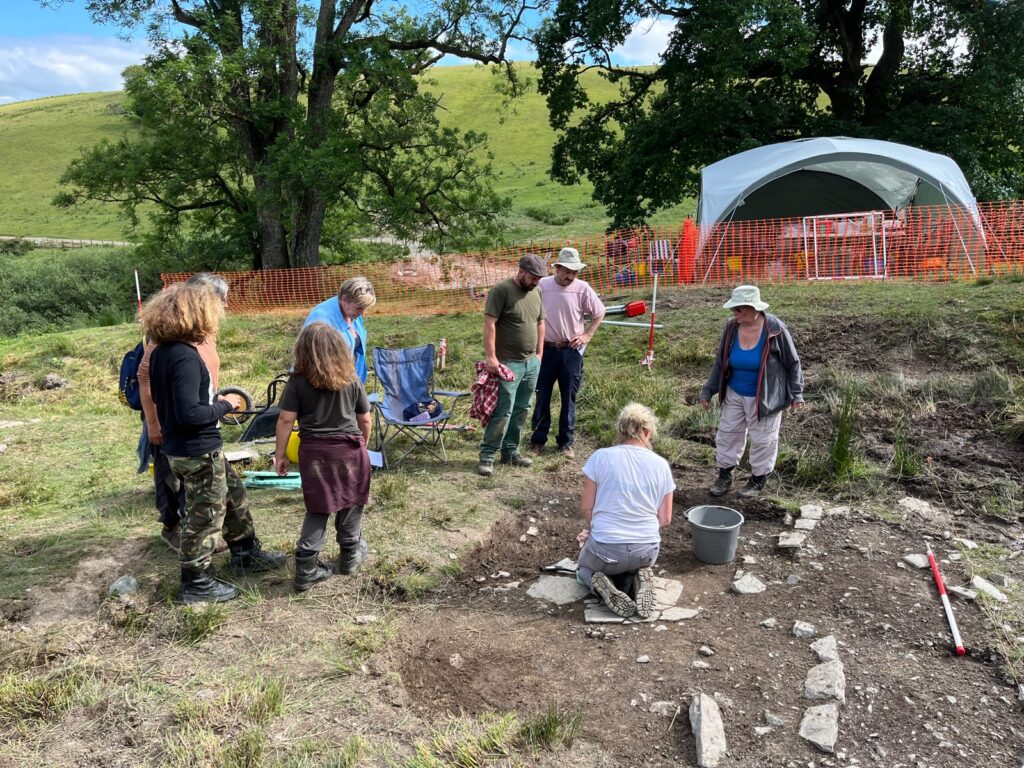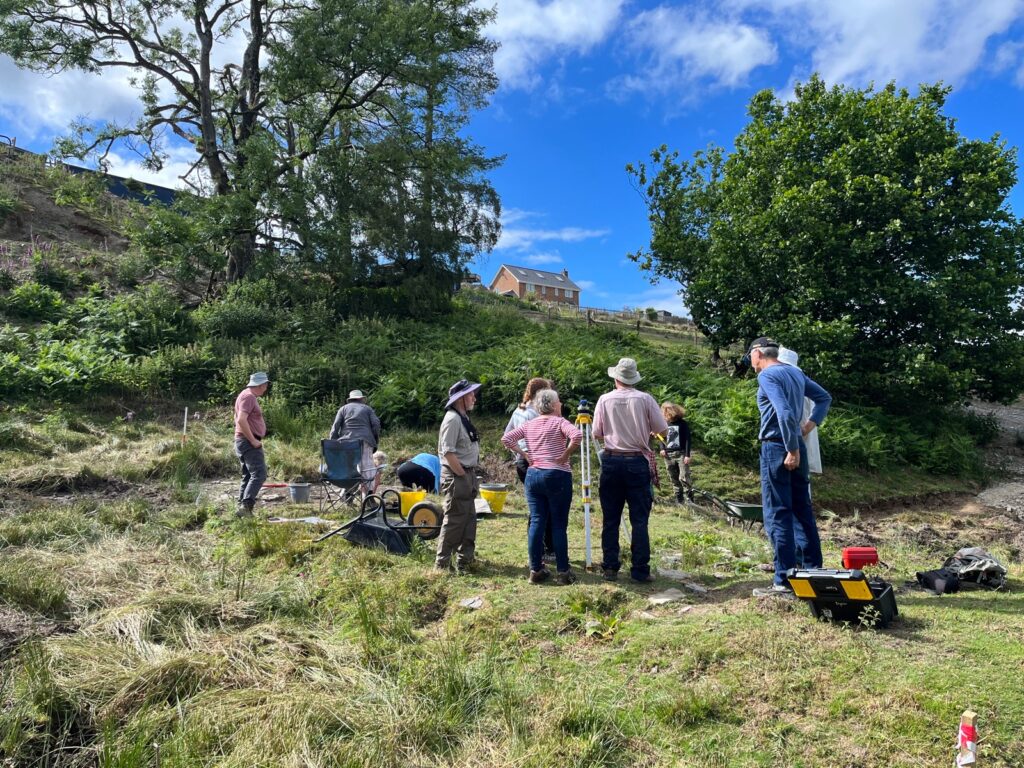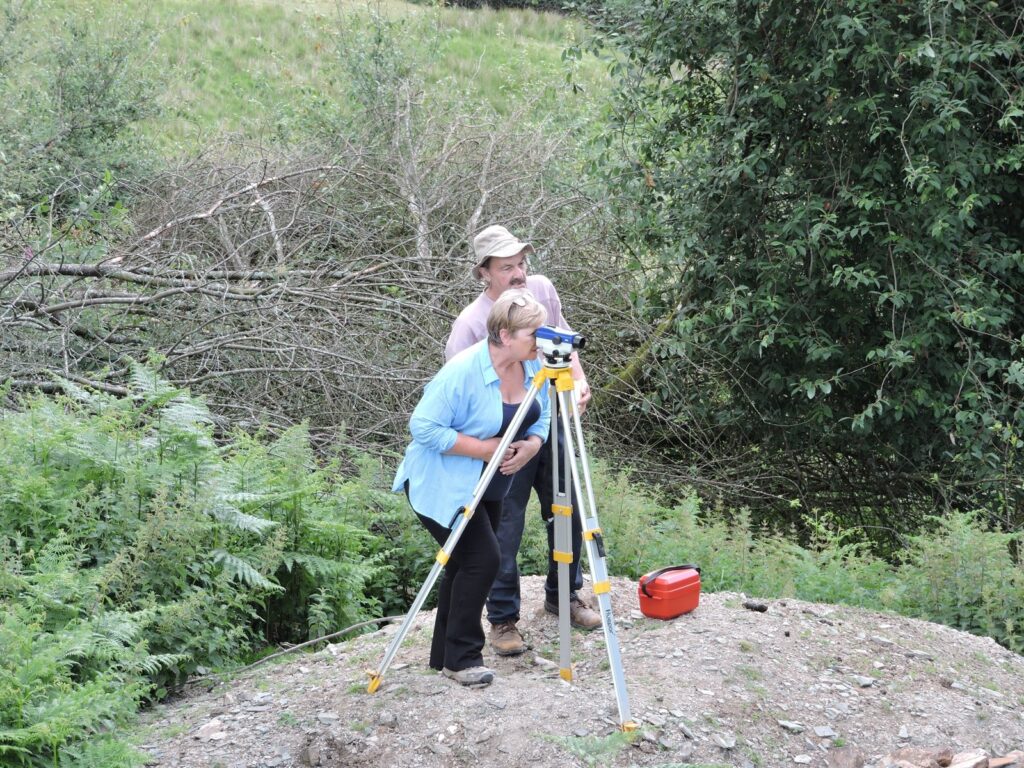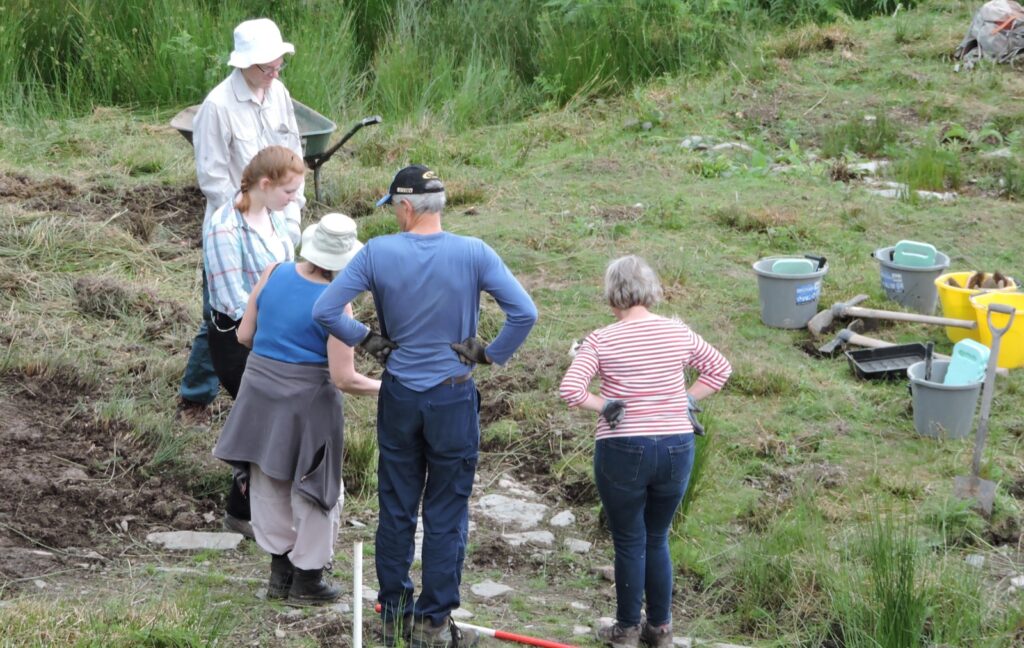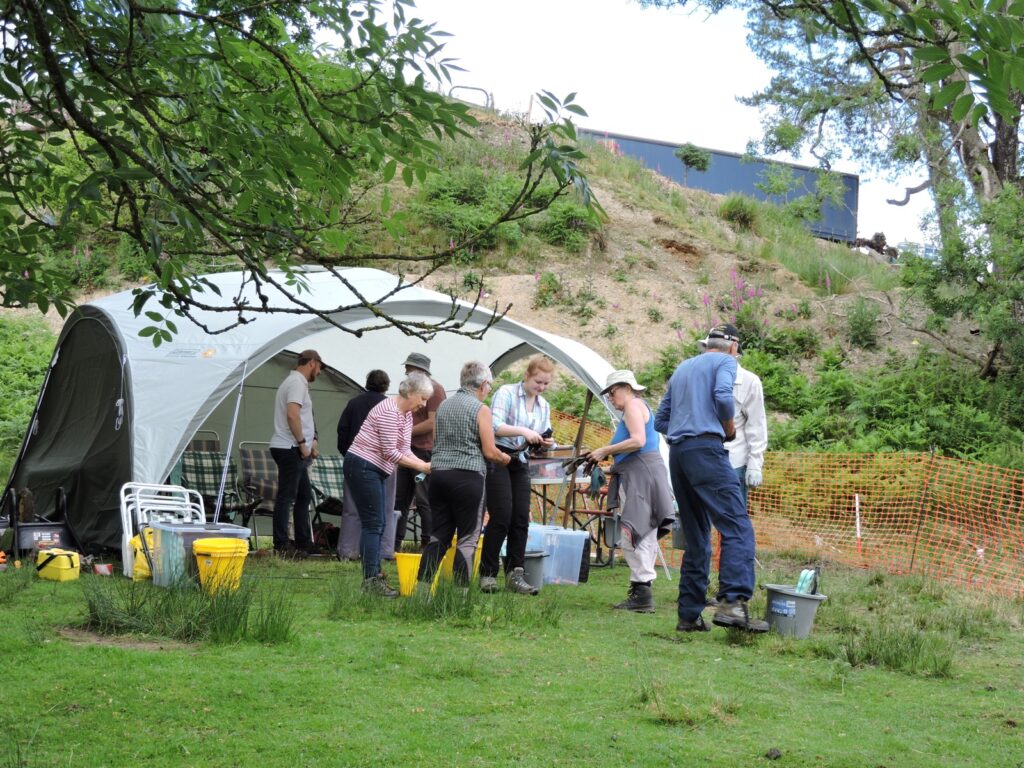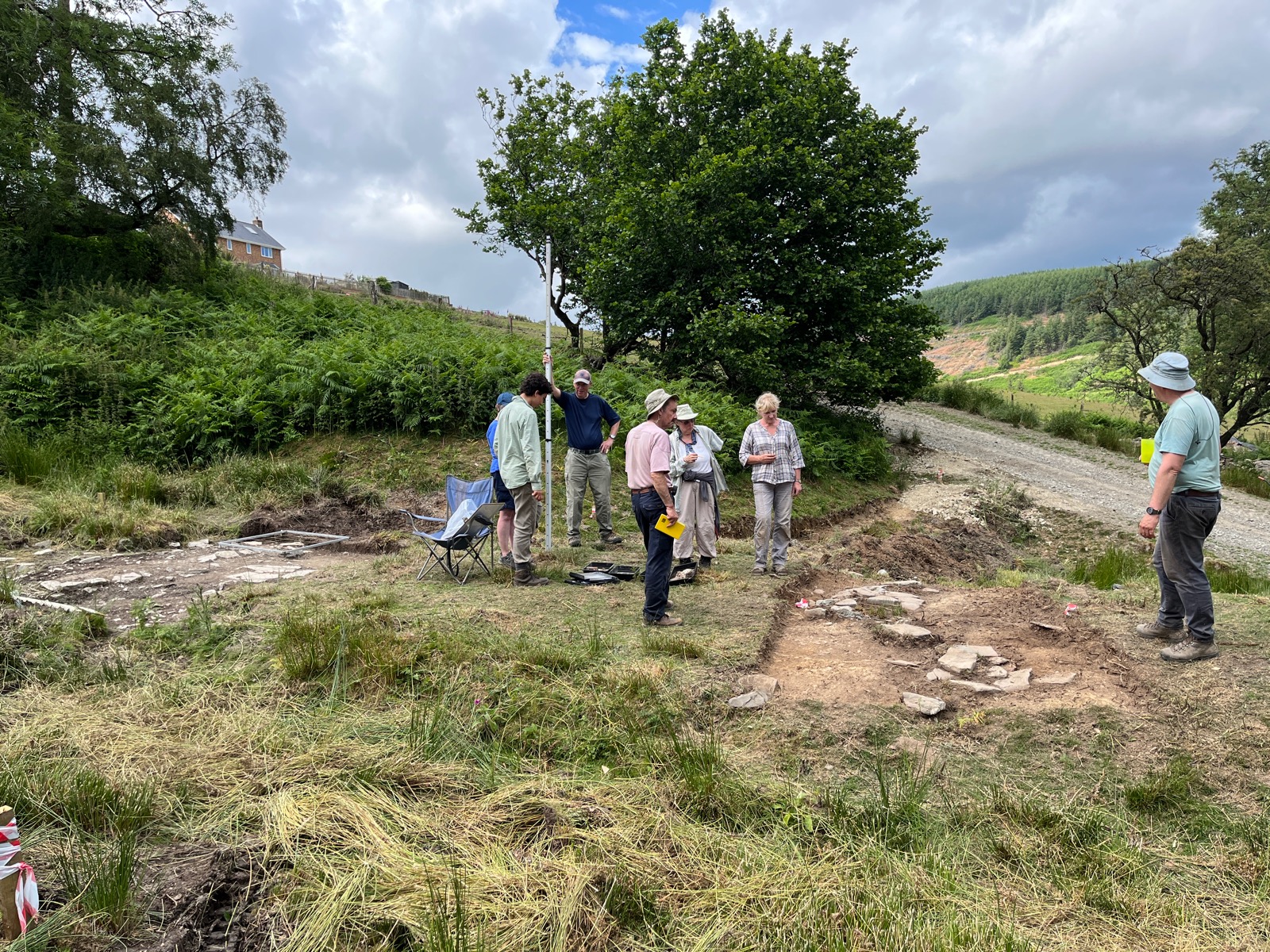We have begun to excavate a house platform at Cwmffwrn. We held a public weekend on 24/25th June 2023 and had the pleasure of the company of members of the public, Trust volunteers, our professional supervisors – Jenny Hall and Martin Locock, and farmers Angela and Ian Lewis. It was an excellent social occasion and we all learned so much from Jenny and Paul.
We will be putting more information about the excavation on this page soon, but here are some photos and videos of the weekend.
Short video clips here:
